Biz Spotlights
1 minute reading time
(280 words)
New Year Resolutions: Goal setting for 2019
As you and your green team have ideas and develop projects to reduce your environmental impact, incorporate goals using the S.M.A.R.T. framework to make it easier to document your progress and to keep your green team's progress on track.
- Specific: Instead of setting a goal to be more environmental, find a specific area that your business could focus on. For example a specific goal would be to reduce the amount of paper used by your business.
- Measurable: A goal that you can track numerically will make it easier to see how far you have progressed with your goal. For example a measurable goal would be to reduce the amount of paper used by your business by 20%.
- Attainable: A goal needs to be something that is achievable with the amount of time, people, and other resources available. Reducing the amount of paper used by 20% within a year is more attainable than an 80% reduction.
- Relevant: Other than being attainable, the goal must be relevant. The goal must be something that is relevant to other initiatives within your business or are a part of your businesses principles. For example is paper usage a part of a larger plan to reduce waste generated by your business, or is your current plan more about reducing water usage and electricity? If so, switching to LED lights would be more relevant of a goal than paper reduction.
- Time-Bound: Creating a time frame to achieve the goal will increase the likelihood of its completion. This is due to there being a target date for those involved to work toward. Adding a timeline to the goal would look something like reducing paper usage by 20% by December 2019.



